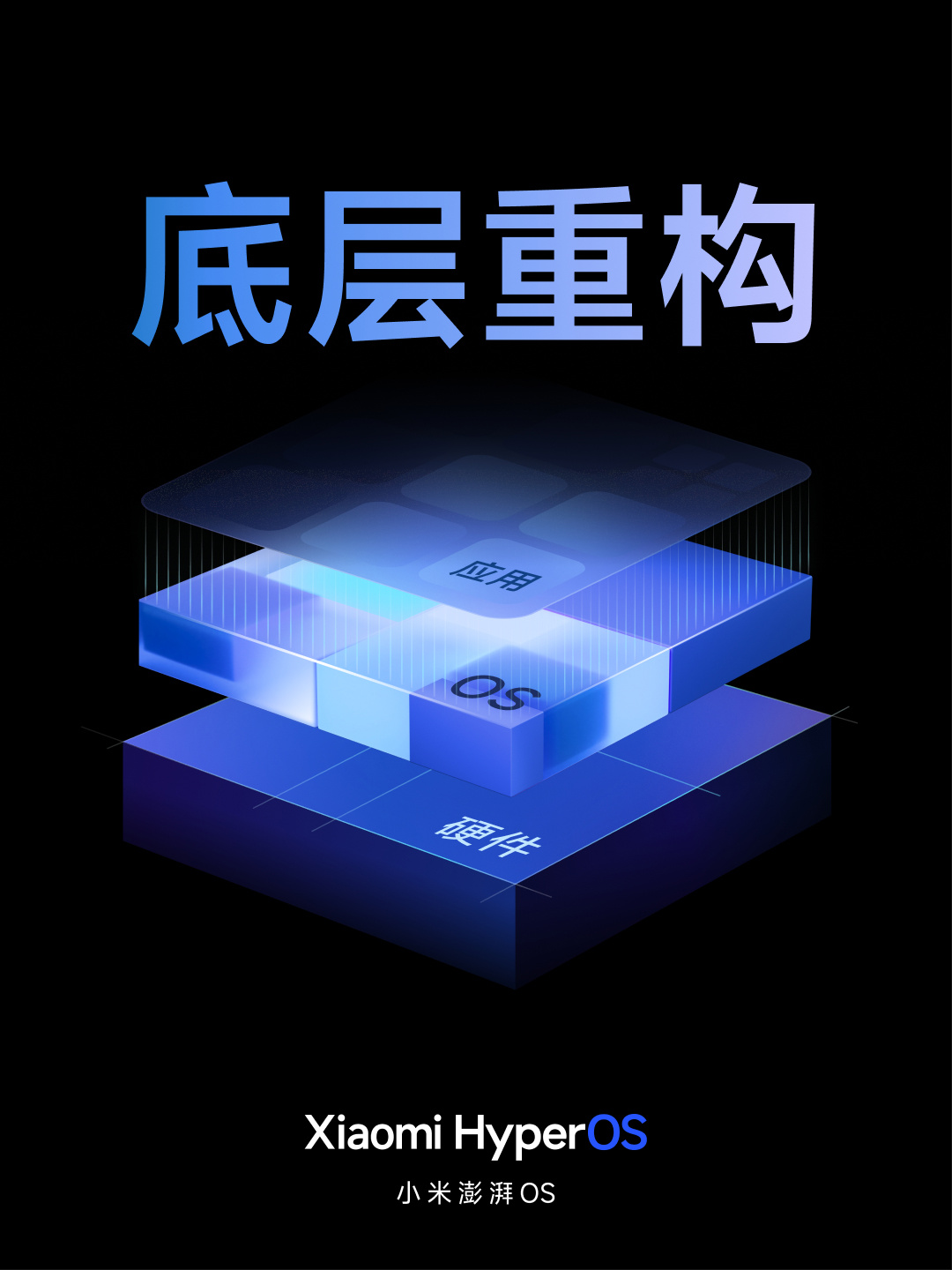Igeekphone October 26 news, in this evening’s Xiaomi new product conference, the new Xiaomi surging OS was officially released.
Xiaomi Group first announced a new strategic upgrade:
From “Mobile X AIoT”, upgrade to “full ecology of people, cars and homes”. From personal devices to smart homes, to smart travel, to create a human-centered, “human-car home full ecology” smart world.

Specifically, Xiaomi Peipai OS ushered in the largest “bottom reconstruction” in the history of Xiaomi, which can flexibly configure the firmware size according to the hardware situation, and the mobile phone firmware is only 8.75GB, known as “the smallest in the industry”.
Xiaomi Surging OS has also been greatly optimized in terms of performance, claiming to be faster than Android’s native kernel on high-computing devices.

In addition, Xiaomi Surging OS claims to reconstruct the subsystem, and the basic experience is completely new:
Memory management | Continuous startup is faster and the VXconfigd is ahead
File system | has been in use for 50 months with virtually no degradation in I/O performance
The network system | solves the problem of network delay and disconnection in multiple scenarios
The graphics subsystem | elegantly blur in real time, making motion effects silky smooth.

In addition, Xiaomi Surging OS can connect nearby devices into a whole, allowing applications to call hardware capabilities across devices:
Camera cooperated with | PC video conference, free call mobile phone after shooting;
Work with | when going out to work, and use 5G network of mobile phone on tablet;
Cross-device focus notification | mobile taxi information, TV display
Finally, Xiaomi Surging OS faces the Internet era to create “global security” :
Single-end security | Self-developed TEE security system, sensitive content is handled separately
Cross-end security | Encryption protocol, peer cross-verification, more secure and reliable
Cross-end rights management | Transparent and controllable interconnection rights illuminate every connection
Xiaomi Vela also announced that it is fully open source and uses the Apache 2.0 protocol.









